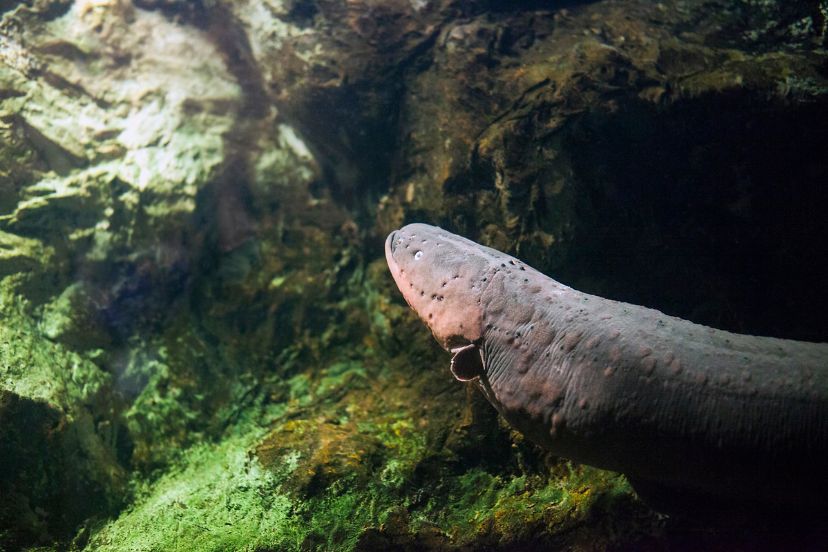Best Freshwater Eels for Aquarium
As a long-time lover and advisor of the fishkeeping hobby, I have seen many unique and beautiful aquatic creatures over the years. One of my favorite species to keep in an aquarium is freshwater eels. These wonderful creatures are both beautiful and fascinating to watch as they move and interact with the environment around them.
If you’re considering adding a freshwater eel to your aquarium, it’s important to choose the right species and set up a welcoming environment for them. In this article, I’ll share my recommendations for the best freshwater eels for aquariums and provide tips on how to choose, house, and care for these unique creatures.
Understanding Freshwater Eels
Freshwater eels are an ancient species that are found in many regions around the world. In the wild, they inhabit streams, rivers, and swamps where they hide in vegetation or rock crevices, waiting to ambush their prey. In aquariums, eels are very active swimmers and require open space to move around.
Eels are elongated, snake-like fish that can grow up to three feet long. They have a slimy texture and are often dark in color, with a slightly bluish tint. They are carnivorous and eat a variety of foods, including small fish, worms, crustaceans, and insects.
Benefits of Keeping The Best Freshwater Eels for Aquarium
Freshwater eels are popular among aquarium enthusiasts for their unique appearance and their tendency to interact with their owners. They are also very hardy and can live for many years with proper care. Eels are very curious and will often come to the surface to investigate their surroundings. They also have a playful nature and enjoy interacting with their owners.
Types of Best Freshwater Eels for Aquarium
There are several species of eels that are suitable for aquariums, each with its own unique characteristics. Here are my top recommendations for the best freshwater eels for aquariums:
Fire Eel
The fire eel is probably the most popular type of freshwater eel for aquariums. They are large, growing up to three feet long, and are generally peaceful with other fish. They are carnivorous and require a varied diet. Fire eels are named for their bright orange-red coloration and the way they undulate like flames when swimming.
Zigzag Eel
As the name suggests, the zigzag eel has a distinctive pattern of zigzagging lines on its body. They are smaller than the fire eel, growing to about a foot in length, and are generally more active and playful. They can be kept in groups but should be housed with fish of similar size and aggression.
Peacock Eel
The peacock eel is another popular species for aquariums. They are smaller than fire eels, growing up to 12 inches long, and have a distinctive striped pattern on their bodies. Peacock eels are peaceful with other fish and can be kept in groups.
Tire Track Eel
The tire track eel is named for the pattern of tire tread-like markings on its body. They are medium-sized, reaching about two feet in length, and are generally peaceful with other fish. Tire track eels require a varied diet that includes live foods.
Electric Eel
The electric eel is a unique species that is often misunderstood. Although they are not technically eels, they are a type of fish that can produce an electric shock for defense and to aid in hunting. Electric eels are large and require a very large aquarium, making them suitable only for experienced fishkeepers.
Choosing the Best Freshwater Eels for Aquarium
When choosing an eel for your aquarium, there are several factors to consider to ensure that the species you choose is compatible with your tank and other fish. Here are some important considerations:
Size
Eels can grow to be quite large, so it’s important to choose a species that will fit comfortably in your tank. Be sure to research the maximum size of the species you are considering and choose a tank that is appropriate.
Aggression
Some species of eels are more aggressive than others and may not be suitable for a community tank. Be sure to research the aggression level of the species you are considering and choose fish that are of similar size and aggression.
Tank Compatibility For Your Eels in Aquarium
Eels require a minimum tank size to thrive, and some species are more sensitive to water conditions than others. Be sure to research the specific requirements of the species you are considering and choose a tank that is appropriate for their needs.
Diet
Eels are carnivorous and require a varied diet that includes live or frozen foods. It’s important to research the specific dietary requirements of the species you are considering and ensure that you are able to provide them with the food they need.
Setting up the Aquarium for Freshwater Eels
Once you have chosen the species of eel you want to keep, it’s important to set up the aquarium environment to ensure their health and happiness. Here are some important considerations:
Tank Size and Shape
Eels require a minimum tank size of 75 gallons, but larger species may need even more space. It’s important to choose a tank with a wide shape to provide plenty of swimming space.
Water Conditions
Eels prefer warm water that is slightly acidic and soft. It’s important to research the specific water requirements of the species you are keeping and adjust your water parameters accordingly.
Filtration and Water Flow
Eels require efficient filtration and a moderate water flow. A canister filter or large hang-on-back filter is a good choice for eel aquariums. Be sure to keep up with regular water changes to maintain a healthy environment.
Substrate and Decorations
Eels prefer a soft substrate such as sand or fine gravel. They also appreciate hiding spots such as plants, rocks, caves, or driftwood, which will make them feel secure in their environment.
Feeding Your Eels in Aquarium
Eels are carnivorous and require a varied diet that includes live or frozen foods such as bloodworms, brine shrimp, and small fish. It’s important to feed them a balanced diet and avoid overfeeding, which can lead to health problems.
Common Eel Diseases and How to Prevent Them
Eels are generally hardy fish, but they can be susceptible to several diseases. Some common ailments to look out for include bacterial infections, parasitic infections, and swim bladder disease. The best way to prevent these diseases is to maintain a clean aquarium environment with proper filtration, water flow, and regular water changes.
Conclusion
Freshwater eels are fascinating and unique fish that make an excellent addition to an aquarium. By choosing the right species, setting up a welcoming environment, and providing proper care and nutrition, you can enjoy the beauty and wonder of these incredible creatures for many years to come.
How long do freshwater eels live?
Freshwater eels can live for up to 20 years with proper care.
Can eels live with other fish?
Some species of eels are peaceful and can be kept with other fish, but others are aggressive and should be housed alone.
What size tank do I need for an eel?
Eels require a minimum tank size of 75 gallons, but larger species may need even more space.
Do eels need a heater?
Yes, eels require warm water that is maintained at a consistent temperature with a heater.
Can eels live in a planted aquarium?
Yes, eels enjoy hiding spots such as plants and can live in a planted aquarium.




